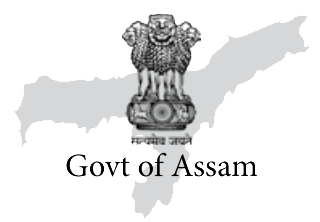Bipul Kalita (58), a resident of Guwahati is a Type Two diabetic patient. On an average, he spends about ₹ 4,000-5000 each month to manage and control his disease. Once he came across the Pradhan Mantri Janaushadhi Kendra in South Sarania, life became much easier for him.
“I stepped into the pharmacy with some hesitancy. However, the seller responded to my apprehension about generic medicine with composure. After all, it was a question of my health and not money alone. Finally, I got convinced. I have realised that the price is about 80% cheaper,” Kalita told Asom Barta.
Debashish Roy and Tapas Deb are fellow customers, like Bipul Kalita, who frequent the pharmacy in South Sarania. They say that they save as high as 90% of their hard-earned money on medicine by coming to this Jan Aushadhi Kendra.
The PMJAY Scheme, under the aegis of Department of Pharmaceuticals, Ministry of Chemicals & Fertilisers was rechristened by Prime Minister Narendra Modi in September 2015. The objective of the scheme is to provide generic medicine with the same composition as the branded ones at almost half the price.
In November 2016, the scheme was against renamed as Pradhan Mantri Bharatiya Janoushdhi Pariyojana (PMBJP). Under this scheme, retail outlets of medicine at affordable prices were opened across the country. As on October 31, 2022, there were 8,819 such outlets across the country. In Assam, there are 109 outlets. The number of medicine and surgical instruments provided through these outlets stand at 1,759 and 280 respectively. These outlets are regulated by the Pharmaceutical and Medical Bureau of India (PMBI)
Rewind to 2015. Md. Hafizur Rahman, an enterprising youth from Nagaon was working on a project on e-governance. He came across the PMBJP Scheme while trawling the net. A pharmaceutical diploma holder from the Chanakya Institute of Pharmaceuticals in Meghalaya, he immediately sensed an opportunity where he could be of service to people and even earn a decent livelihood. After almost a year, on November 25, 2016 he managed to open the first ever Jan Aushadhi centre of North East in Shillongoni in Nagaon district. He now manages two such outlets, the other being in Mohkhuli. “It was a struggle in the beginning. My average sales were ₹ 500 to ₹ 700 each day. However, the acceptance of these products started increasing. Awareness grew among the patients towards generic medicine. With the support of the Government and my own persistence, today I can tell you that my sales have gone up multiple times,” Hafizur told this newsletter over the phone.
“The costliest antibiotics in my outlet is worth Rs 3,000 per strip. However, when one buys the same product of the reputed pharmaceutical companies, it may cost a patient anywhere between ₹13000-14,000.” He also credited these centres for creating awareness in a number of areas, especially menstrual hygiene. He informed this reporter that sales of biodegradable sanitary pads have gone up in his two outlets as well.

Rupa Chetri, the proprietor of the South Sarania outlet, said that the Government gave her a one-time subsidy of ₹ 2 lakh in 2020 when she opened the outlet. “Now, I get ₹ 15,000 each month while my average turnover in the South Sarania outlet is ₹ 40,000. I operate two more outlets in Hengrabari and Baghorbori,’’ she informed this newsletter.
Dr Diptimoyee Devi, the head of the Department of Pharmacology Department of Gauhati Medical College, testified to the potency of the generic medicine, which she said are manufactured after complying with all prescribed norms. “Some medicines are not available under the generic category because of the currency of copyright but once that stage is over, patients can take advantage of their pricing,” she told Asom Barta.
She said that the Government needs to maintain a hawk eye regarding the standard of generic medicine, while advocating for greater respect to the pharmacologists so that Assam, too, can meaningfully contribute to developing effective medicines.













